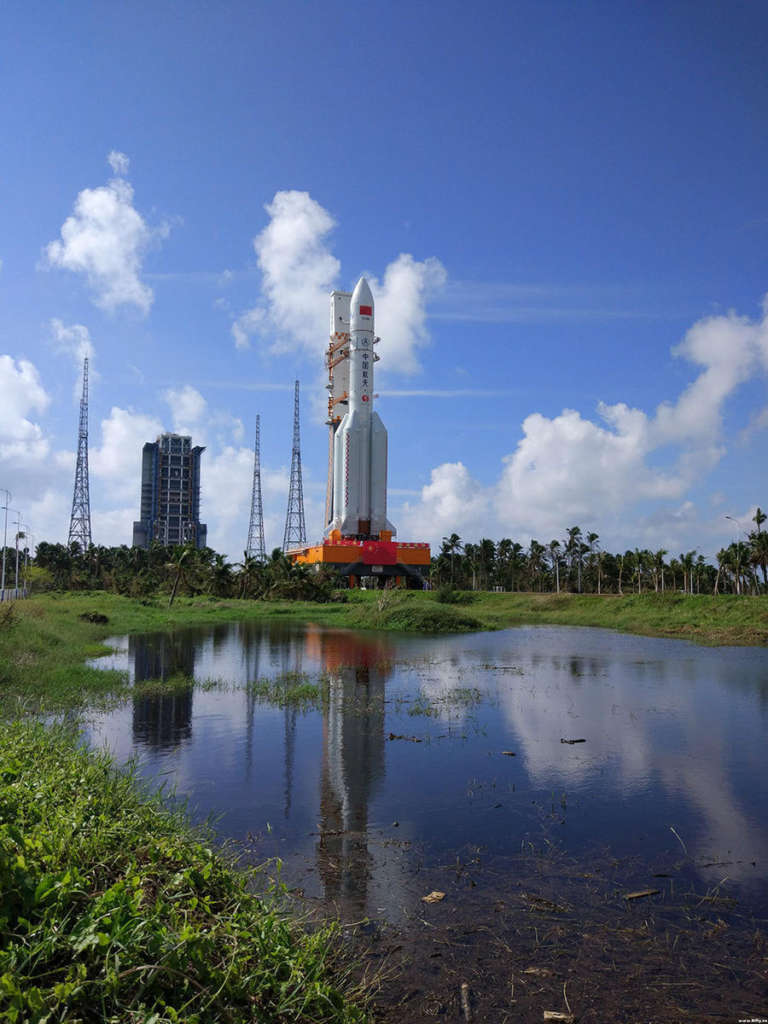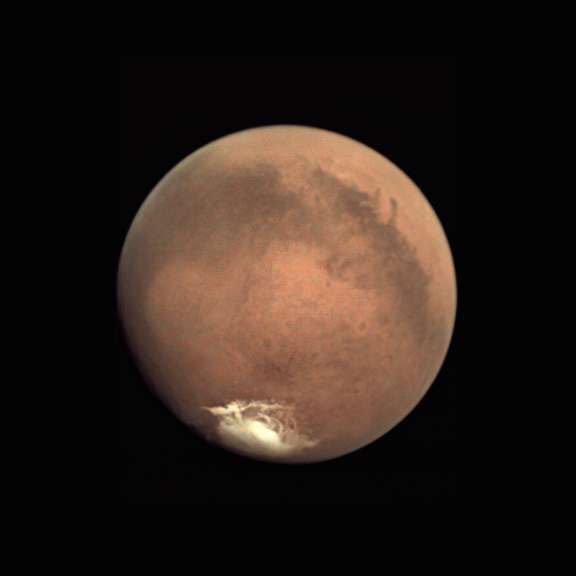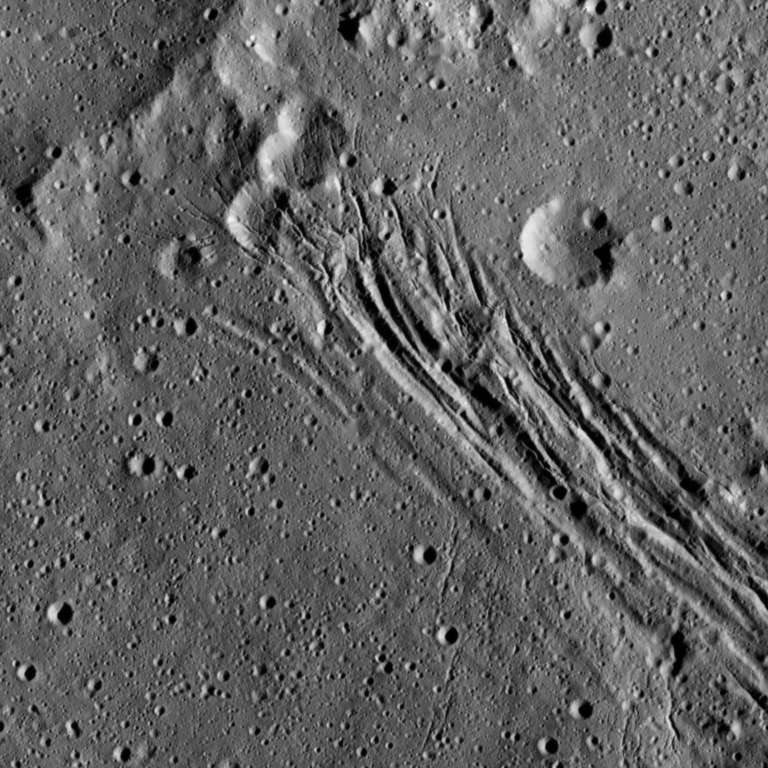Emily Lakdawalla • Nov 01, 2016
What's up in the solar system, November 2016 edition: Cassini takes a leap, ExoMars starts science, Long March 5 launch
November will be a huge month for the Cassini Saturn orbiter: it's rapidly circling Saturn in 8- or 9-day orbits, setting up for a November 29 encounter with Titan that will shoot it much closer to Saturn, into a new orbit that takes it just outside Saturn's main ring system. It's the beginning of the end for the mission, but also the beginning of awesome new science. November was also supposed to be the beginning of awesome new science for Juno, but they have had to delay the beginning of their science mission because of engine and computer problems. Meanwhile, ESA's ExoMars Trace Gas Orbiter is going to acquire its first science data, just a taste for the science instruments before they begin their aerobraking phase. And here on Earth, two important weather spacecraft, Himawari-9 and GOES-R, should be getting off the ground, while China debuts its Long March 5 rocket.
Here's Olaf Frohn's chart of active space missions to get you oriented to the busy solar system.

Earth Launches and Landings (contributed by Jason Davis)
On October 28, the International Space Station officially began its 50th crewed Expedition, under the command of NASA's Shane Kimbrough. Currently serving with Kimbrough are cosmonauts Sergey Ryzhikov and Andrey Borisenko. On November 15, the trio will be joined by NASA's Peggy Whitson, European Space Agency astronaut Thomas Pesquet and cosmonaut Oleg Novitskiy. They will launch to the station aboard Soyuz MS-02. No cargo ships are expected to arrive at the station during this crew increment.
Four Earth observation spacecraft are heading to orbit in November. Japan's Himawari-9 weather satellite is scheduled to launch November 1. Five days later, the WorldView 4 commercial imaging satellite heads to space on an Atlas V rocket. On November 16, another Atlas V will launch GOES-R, a next-generation NOAA weather satellite bound for geosynchronous orbit. And finally, Spaceflight Now's launch manifest predicts a November 23 launch for India's ResourceSat 2A agriculture and urban planning satellite.
China's new Long March 5 rocket is expected to blast off on its inaugural test flight from the country's Wenchang launch center this month. And four new Galileo navigation satellites will be placed into orbit for Europe by an Ariane V rocket on November 17. Other potential launches this month include the Echostar 21 communications satellite aboard a Russian Proton rocket, as well as a high-energy X-ray telescope by China.

Inner Solar System
Akatsuki science at Venus was the topic of a plenary talk by Takehiko Satoh at the Division for Planetary Sciences meeting two weeks ago. Kenneth Chang wrote a lengthy article about it for The New York Times. At the end, it mentions that Akatsuki can operate until at least April 2018, and possibly for as many as six more years, depending on the unknown amount of remaining fuel. For updates, check the mission's Twitter feed and website.
Earth's Neighborhood
This month, full Moon is on November 14, and new Moon is on November 29.
The longevity of the Lunar Reconnaissance Orbiter mission has paid off with a new result published in Nature last month. They have found more than 200 craters that formed on the moon during the mission so far. That's more than predicted, which, in turn, means that very young surfaces on the Moon may be even younger than thought. Meanwhile, they are planning to get the most out of the mission by allowing its orbit to drift and evolve, rather than using precious fuel for a stationkeeping burn. Over time, its orbit (currently slightly elliptical with a periapsis at about 30 kilometers and apoapsis about 150 kilometers) will tend to circularize. Be sure to check out their recently posted images.
I don't have an updates on ARTEMIS since August, or on Chang'e 3 since last month, and Yutu is now Schroedinger's rover, and I haven't had any information on the status of Chang'e 5 T1 for a long time.
OSIRIS-REx is now in its Outbound Cruise phase. Today it is 32 million kilometers from Earth. Last month, it successfully fired its trajectory correction maneuver thrusters for the first time, a brief 12-second burn. Ordinarily, such a burn would have been used to fine-tune its trajectory, but "the spacecraft's orbit had no practical need for correction." They could've used up to 11 kilograms of fuel for the maneuver, but needed only half a kilo -- a major savings that will give the mission more leeway for planning Bennu proximity operations. They'll be doing a much larger burn in December. Its next major event is an Earth flyby on September 23, 2017, 325 days from now. Keep up with the mission via Twitter.
Near-Earth Asteroids
Hayabusa2 is now 152 million kilometers from Earth and 52 million kilometers from Ryugu. It's on track for a July 2018 arrival at the asteroid. It takes a long time because it's using ion engine power to match its orbit with the asteroid's.
Mars
It's full summer for the Mars rovers now, with perihelion having just passed, on October 29, and summer solstice coming on November 28. Warmer nighttime temperatures mean less motor preheating and more active days for the rovers. But it could be a bad dust storm season this year, according to JPL, which would be bad news for solar-powered Opportunity, though some atmospheric scientists I've spoken with are actually hoping for dust storms, because they'd be fun to study from the ground and from orbit with both MAVEN and ExoMars TGO.
Mars Express Mars Webcam recent images and Mars Odyssey THEMIS image releases continue to include enjoyable views of the defrosting south polar ice cap, just about at solstice, like this one.

It's now Opportunity sol 4551. Opportunity has spent the month studying Spirit Mound, which looks really strange up close. Opportunity tried to take a photo of ESA's Schiaparelli lander, but didn't succeed. Dusty skies continue to decrease available power, down to 463 watt-hours in the most recent update. It's a good thing for Opportunity that dust storm season coincides with southern hemisphere summer. Total odometry stands at 43.33 kilometers.
On the other side of Mars, it's now Curiosity sol 1507. Since my last update, Curiosity has drilled again at a site called Sebina (on sol 1495), and has already driven onward by more than 100 meters. They're now drilling at regular intervals to explore how the Murray formation changes as the rover crosses it. The nearby landscape continues to be full of rough, broken rock, so the rover's recent several drives have been averaging around 20 meters, but the view in the most recent images looks a little better. The rover seems to have spotted a meteorite on sol 1505 and shot it with ChemCam on sol 1506. For detailed near-daily updates, visit the USGS Astrogeology news site.
It appears that the Schiaparelli lander met a sad end, but ExoMars Trace Gas Orbiter is getting off to a great start at Mars. The team is now planning science to be performed on two "capture orbits" this month, after which the science instruments will be shut down for the duration of the yearlong aerobraking period. I'll post any images from ExoMars' CASSIS camera as soon as I see them.
The NOMAD team is preparing the two ExoMars TGO capture orbits in November 2016. pic.twitter.com/nF05Isgol9
— ExoMars_NOMAD (@ExoMars_NOMAD) October 28, 2016
With a bit of luck we'll catch PHOBOS in orbit 2. pic.twitter.com/KI3yeGdHCj
— ExoMars_NOMAD (@ExoMars_NOMAD) October 28, 2016
Mars Reconnaissance Orbiter reports quite a bit of local dust and water ice cloud activity across the planet in the most recent MARCI weather report, but still storm-free skies over both rovers. (Rover imaging shows that both are seeing lots of dust kicked up by storms elsewhere, though.) Last month, the Mars Reconnaissance Orbiter team published a story about how members of the public have been poring over MRO Context Camera images of the south pole, looking for places worth imaging with the higher-resolution HiRISE camera.
MAVEN shared scientific results at the Division for Planetary Sciences meeting two weeks ago, including the striking animation below from the ultraviolet imager, showing how clouds form over volcanoes during a Martian day. The magenta cap at the bottom of the image signifies the presence of ozone -- Mars doesn't have an ozone hole, it has an ozone hood!
MAVEN ultraviolet imager views Martian clouds forming Images from MAVEN's Imaging UltraViolet Spectrograph were used to make this movie of rapid cloud formation on Mars on July 9-10, 2016. The ultraviolet colors of the planet have been rendered in false color. The movie uses four MAVEN images to show about 7 hours of Mars rotation during this period, and interleaves simulated views that would be seen between the four images. The left part of the planet is in morning and the right side in afternoon. Mars’ prominent volcanoes, topped with white clouds, can be seen moving across the disk. Mars’ tallest volcano, Olympus Mons, appears as a prominent dark region near the top of the images, with a small white cloud at the summit that grows during the day. Olympus Mons appears dark because the volcano rises up above much of the hazy atmosphere which makes the rest of the planet appear lighter. Three more volcanoes appear in a diagonal row, with their cloud cover merging by the end of the day. These images are particularly interesting because they show how rapidly and extensively the clouds topping the volcanoes form in the afternoon. Similar processes occur at Earth, with the flow of winds over mountains creating clouds.Video: NASA / MAVEN / University of Colorado
Finally, Mars Orbiter Mission is going into its third year of operations and still going strong. I posted their image archive earlier this month, and plan to do more with it in a week or two. Stay tuned!
Beyond Mars
Last month, the Dawn team released a whole lot of new data to the Planetary Data System. I have, sadly, not had time to begin to look at it. They're still releasing daily images, like this cool one of an extensional tectonic feature:

Juno has had a rough month. First, they canceled their planned burn, which means staying in a 53.5-day orbit for the time being, and then they went into safe mode right before periapsis, preventing the gathering of science data. They exited safe mode 6 days later, on October 24. I'll have a more detailed post on the implications for Juno in the coming weeks. The next periapsis will be PJ3 on December 11.
November will be a momentous month for Cassini, which is orbiting Saturn fast and furious right now. November will include no fewer than four orbits: it's in Rev 247 (a 9.6-day orbit) now, begins Rev 248 (an 8.7-day orbit) on November 6, which includes a Titan flyby on November 13, then Rev 249 (an 8-day orbit) starts on November 15, and Rev 250 (another 8-day orbit) on November 23. All that spinning sets it up for a momentous Titan flyby on November 29, which will dramatically shift Cassini's periapsis closer to Saturn, leaping over the G ring to just outside the F ring. Cassini will perform 20 F-ring orbits before another major orbital maneuver on April 22 sends its periapsis to between the D ring and Saturn. Meanwhile, the spacecraft will still be doing lots of science observations of the rings and searches for storms on Saturn and Titan. Moon observation highlights include Tethys on November 10 and Mimas on November 19.
New Horizons completed the transmission of all of its Pluto data last month, a huge and happy accomplishment. They will celebrate by wiping the spacecraft's data recorders clean of Pluto data (after verifying multiple times that they really have received all of it on Earth). They also shared lots of science results at the DPS meeting, which I wrote up in a blog entry. The spacecraft is now 36.8 AU from the Sun and 3.8 AU beyond Pluto. It takes more than 10 hours for signals to go out there and back.
Finally, the Voyagers are still going, going, going. Voyager 1 is at 136.6 AU from the Sun, and Voyager 2 is at 112.6 AU.
Support our core enterprises
Your support powers our mission to explore worlds, find life, and defend Earth. You make all the difference when you make a gift. Give today!
Donate

 Explore Worlds
Explore Worlds Find Life
Find Life Defend Earth
Defend Earth

